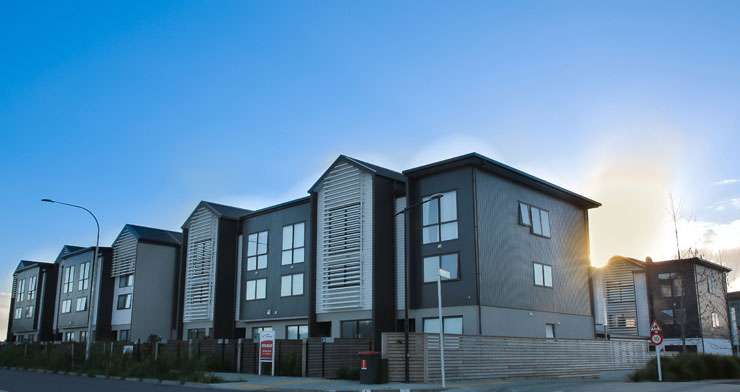Buying a home with good resale value can have long-term benefits for first-home buyers.
Traditionally, first-home buyers have done well purchasing a do-up, and on-selling when the work is complete.
For most first-home buyers now, the only route into home ownership is to buy brand-new thanks to the loan-to-value ratio (LVR) rules that mean they need a 20% deposit to buy an existing home, but often only 10% for a new one.
Both new and old homes can be in more sought-after streets or suburbs than others, and some are of a much higher quality. The resale value will be affected by these and more factors.
Start your property search
For new homes, buyers need to consider many factors. Is the home infill housing, a new suburb expanding on the outskirts of towns such as Pokeno, south of Auckland, or Aotea or one of the new master-planned communities being driven by Kāinga Ora?
Infill developments
Small, one-off developments can open options in suburbs where prices are high and stock is limited, but buyers should do their homework, says James Wilson, head of valuations at OneRoof’s data partner, Valocity. Developers like to get in and out quickly to maximise their return, which means those that are under pressure will only deliver homes that just meet Building Code standards. “You really need to do your due diligence,” says Wilson, adding that other factors can come into play that could affect resale value. “Will, for example, another development on a neighbouring section block out your view or light or be built to a higher standard? Buyers should also look at whether the suburb is going up or down in the world.”
New suburbs
Most thriving towns and cities have new mass subdivisions at the edge of town. The council does have rules about what can or can’t be built and a certain amount of the developer’s land does need to be set aside for things like parks, schools and shops. That doesn’t always mean that the community will have everything it needs from day one, or ever, says Wilson.
Master-planned communities are designed to have everything they need to thrive, purpose built to the right scale. The parks, roads, schools, jobs and public transport to the CBD are part of the overall plan. “(Kāinga Ora) really does focus on building community,” says Wilson. “When (it) gets it right with the master planning, you get this amenity benefit over time.”

James Wilson: “You really need to do your due diligence.” Photo / Supplied
Often the better building companies are chosen to build the houses, says Wilson. “(Kāinga Ora) is very strategically picking locations and development plans that will work with the private sector.”
With any large-scale development, home buyers need to be aware that there will be disruptions and the suburb may not fulfil its potential until the development has finished, says Wilson. “There could be construction for years to come.”
Many other factors go into choosing a home with the best resale value. For example, smaller low-maintenance homes may be in demand in some areas, but larger ones in others. It’s always a good idea to talk to real estate agents and search for sold properties in the suburb.
Harcourts Hobsonville agent Anna Byron says the homeowners who have made the best capital gains in the new suburb are those who have bought affordable Axis or other homes officially classified as affordable.

Houses in the master-planned suburb of Hobsonville Point, Auckland, have grown in value. Photo / New Zealand Herald
Typically, KiwiBuild are sold more cheaply than equivalent homes to comply with government requirements on cost. They often jump in value immediately.
In Hobsonville, other homes that do well stand out for various reasons, says Byron. “End-terrace homes get a much better capital gain. So do north-facing homes and the ones that have a better garden or a garage stand out from the others. We do see better capital gain closer to Catalina Bay, the ferry, Little Creatures (pub) and the eateries.”
Nicki Cruickshank, sales director at Tommy’s real estate, says new-home buyers who have made the best capital gain when they resell in Wellington tend to have bought townhouses or apartments in the city’s suburbs such as Lyall Bay, Ngaio, Karori and Island Bay.
“For example, we sold 15 townhouses in the first lockdown. Some are now reselling at close to 50% more than what they paid for them last year,” says Cruickshank.
In Wellington, some of the best gains to be made on the resale of existing stock are those brave people who buy 1990s homes and reclad them, says Cruickshank.
The developer/builder can make a big difference to the desirability, says Wilson. Group builders such as Fletcher Living, GJ Gardner and Signature Homes have reputations to maintain and, as a result, are keen to provide higher quality homes, he says.
When those and other group build developers’ names appear in real estate advertisements, they’re likely to draw interest from buyers who expect a certain level of quality. It’s the same with apartment developers like Ockham who have built reputations and are likely to be around for a long time.
- This content was created in partnership with Kāinga Ora








